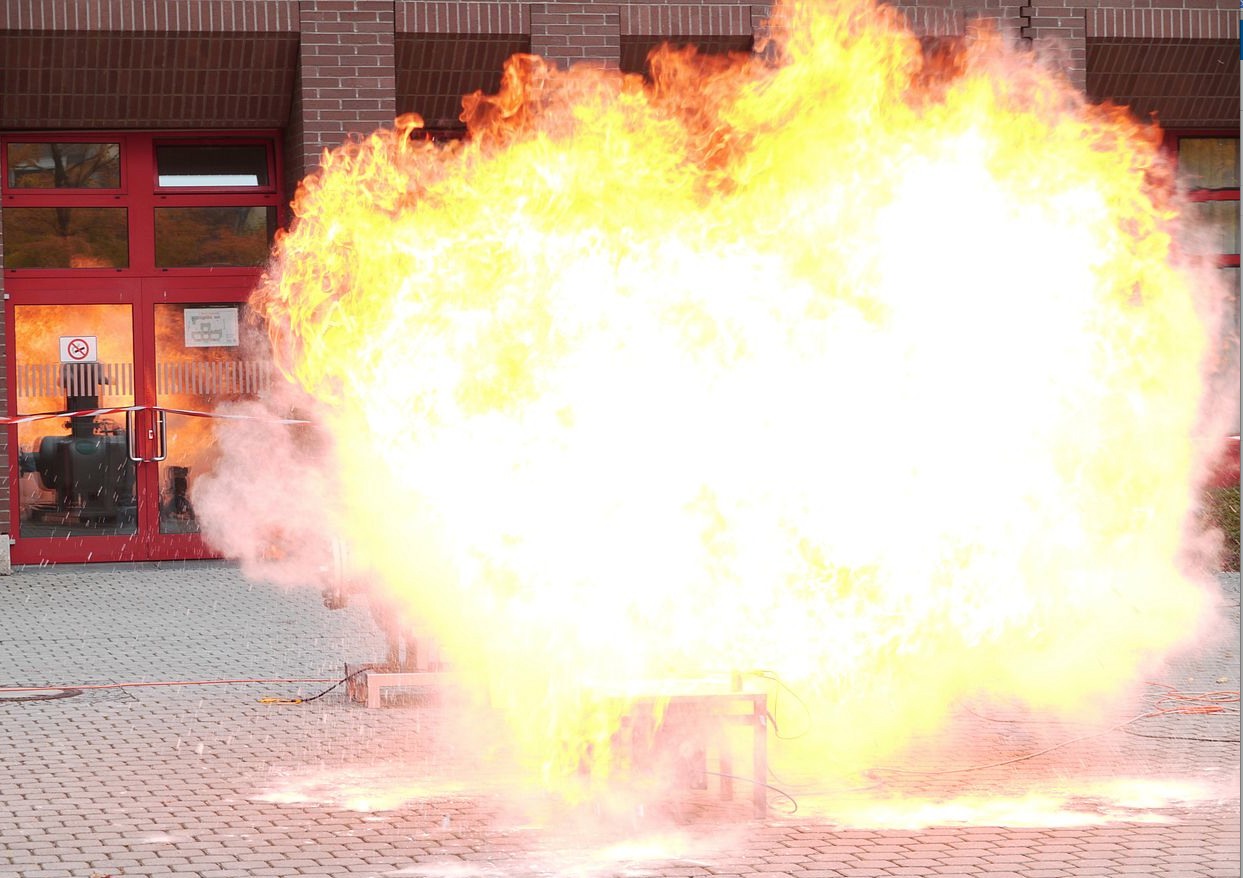We examine the risk of combustible dust in the workplace, what dusts are combustible, the elements that cause them to explode and how testing and awareness can significantly reduce the danger of dust explosions on the job.
The Dangers of Combustible Dust and How to Test for it
Combustible dust is an ever-present danger in the workplace. The force from a combustible dust explosion can destroy entire buildings, cause injury and even death.
Many employers and employees are often unaware that a hazard even exists, however dust explosions can occur in many different types of workplaces and industries.
What Is Combustible Dust?
A combustible dust is any fine material that has the ability to catch fire and explode when mixed with oxygen.
Dusts occur when these materials, which include agricultural products, metals, chemicals, pharmaceuticals, pesticides, rubber, wool, textiles and plastics, are transported, handled, processed, polished, ground and shaped, or by abrasive blasting, cutting and mixing.
When this dust is disturbed and comes into contact with a heat source, there is potential for a serious explosion.
Five elements are needed for dust to become combustible. This is known as the Dust Explosion Pentagon (see picture). The five elements are:
- Dispersion of dust particles in the right concentration in the air
- Confinement of the dust cloud, which allows pressure to build up, increasing the likelihood of an explosion
- Fuel to burn
- Oxygen
- An ignition source, heat or a spark
There are two types of dust explosions, primary and secondary. Primary explosions occur when there is a dust suspension in a confined space, such as a container, room or piece of equipment that is ignited and explodes. A primary explosion can move other dust that has accumulated, which, when airborne, also ignites. Secondary explosions are likely to be more destructive.
Identifying a Combustible Dust Hazard
According to the Canadian Centre for Occupational Health and Safety (CCOHS), the rule of thumb about dust accumulation is that if you can write in it, or if it’s as thick as a paperclip, it’s potentially hazardous.
The advice is to carry out a risk assessment, taking into consideration any ignition sources and the potential for
dust explosion.
CCOHS suggests carrying out research beforehand to see if dust has the potential to be combustible, as this information isn’t always stated on a material’s safety data sheet.
Testing for Combustible Dusts
Employers and employees that are unsure whether dusts in the workplace are combustible can send samples for testing. Specialist laboratories can evaluate a dust’s unique physical and chemical characteristics and determine if it has the potential to be explosive.
To gather a sample of dust, employers or employees should use a dust collection system. Alternatively, dust explosion consultants can take samples.
There are a number of tests laboratories use to assess the combustible risk of a dust, for example: a minimum ignition energy test on a dust layer and dust cloud, explosibility screening and minimum ignition temperature tests.
Preventative Measures
Other ways to minimize the chance of combustible dust explosions, recommended by health and safety experts, are to avoid accumulation of dust on horizontal surfaces, such as window ledges and beams, and to eliminate hidden areas where dust can go unnoticed.
It is also advised that workers avoid installing rough ceilings and put covers around pipes and cables or embed them in walls to reduce the surface where dust can build up.
Additional measures include developing and implementing a combustible dust inspection and control program and an ignition control program, along with educating all employees about combustible dusts. Staff should also regularly inspect for dust during work hours.
Staying Safe
As long as workers remain cautious about the risk of dusts becoming combustible, follow advice from health and safety experts, and get questionable dusts tested by laboratories, the danger of explosions will be dramatically reduced.


